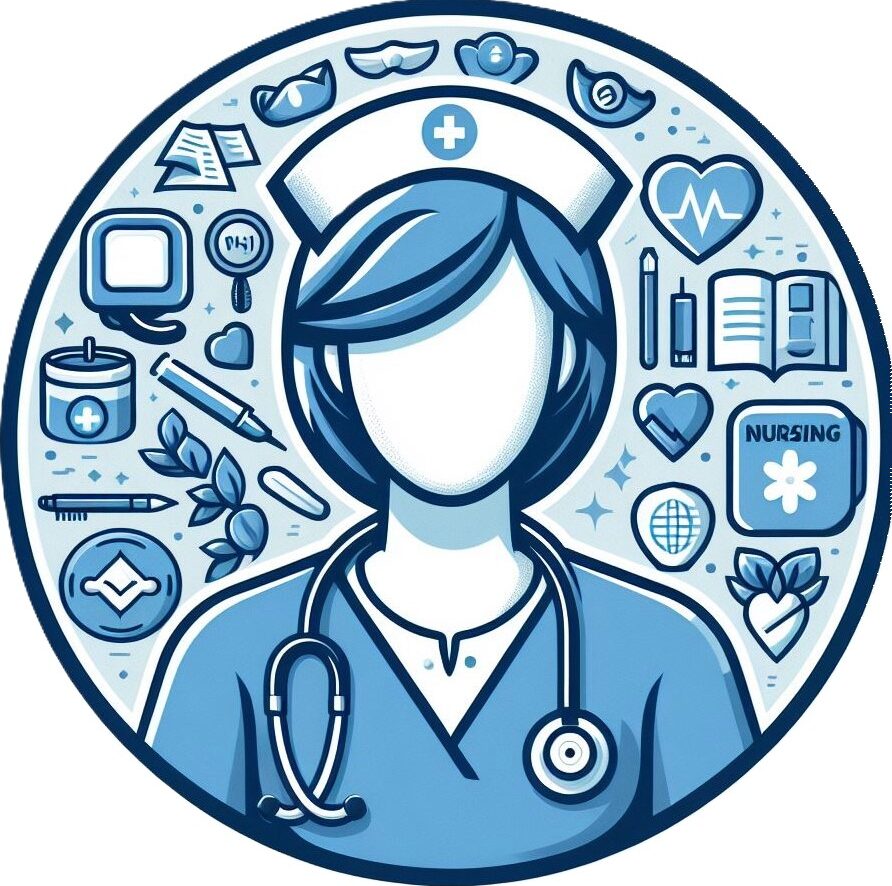
Introduction to Effective Communication in Nursing
Welcome you all to the world of nursing, it’s me (Jen), even though you are a nursing student, a novice nurse or an expert of nursing, you all know that effective communication is one of the most important aspects for successful nurses in delivering competent care for patients. So, what is effective communication? Effective communication is not only the ability to transport clear messages (ideas, opinions, thoughts and information) from one person to another, but also the capability of understanding the emotion and intention behind the information. Effective communication is even more important in nursing as it is essential to collaborating on teams with your colleagues and multidisciplinary team. Furthermore, it’s also crucial to patient-centered care.
In nursing, effective communication skills play a vital role in patient care outcomes. Nurses who give time to communicate, listen and understand their patients’ perspective are far better prepared to solve problems as they arise, leading to better patient outcomes. On the contrary, ineffective communication in healthcare, can result in patients misunderstanding guidance and failing to adhere to planned treatments. In addition, it may also result in workflow failures on the team, leading to a medical error.
Furthermore, it is obviously showed that competency in healthcare communication provides a central mean for initiating a trusting, collaborative relationship with patients and their families. Interpersonal communication skills not only impact the quality of decisions made, also the level of patient inspiration to continue treatment protocols and achieve optimal clinical outcomes.
Good communication in nursing means coming in contact with every patient with the intention to know their issues, opinions and experiences. In order to achieve this goal, effective communication comprises 10 effective communication skills for nurses:
- Verbal communication
- Non-verbal communication
- Active listening
- Written communication
- Presentation skills
- Patient education
- Making personal connection
- Trust
- Cultural awareness
- Compassion
The focus of this post is on verbal communication, non-verbal communication and writing communication in order to demonstrate how effective communication brings to positive patient care outcomes.
Before exploring the contexts of those communication skills. I want to present the crucial role of active listening and empathy in nursing communication. Active listening shows empathy for your patients, shows you are a thoughtful listener and assists to encourage your patients to share their opinions and participate in collaborative treatments. Active listening builds trust with your patients as they can see their concerns are taken into account and fully understood.
Verbal Communication: The Lifeline of Patient Care
Excellent verbal communication is a key in nursing care. The nuances of tone, clarity, and volume in verbal exchanges are vital aspects. A gentle, polite tone can convey empathy as well as compassion, whereas a harsh tone can create resentment. The pitch, volume and inflection of your voice present the meaning of your message and how it is interpreted.
Effective communication for nursing is even more important these days as we live in multicultural community where people come from different cultures and backgrounds. Therefore, sensitively using appropriate languages when caring out care for patients who come from vary geographic locations are crucial to achieve desired care outcomes. There are various cultural codes for interpersonal relationships, disclosure and privacy. Linguistic difficulties can be resolved with the interpreter’ service. As a result, cultural and linguistic consideration in patient interactions is a must in nursing to achieve positive health outcomes, including improved patient satisfaction.
Let’s look at a few practice tips to achieve effective verbal communication
Tip # 1: Simply encourage patients to communicate by asking open questions as “Can you tell me more about that?” or “what is your concern?”.
Tip # 2: Avoiding using “honey”, “love” or “sweetie” and instead using the patient’s first name or preferred name.
Tip # 3: Speaking in clear, complete sentences and avoid using technical jargon.
The real example in effective verbal communication:
The below scenario happened when I was working in a busy surgical ward. One of the patients (Mr. Zhong) returned to the ward post total hip replacement. He was placed under the general and spinal anesthetic when he had surgery. Therefore, the spinal block was still in effect and Mr. Zhong did not know why he could not move his legs; he was so anxious as he thought he could be paralyzed. After checking all his vital signs, neuro and limbs observations, I understood that his legs were fine and I took my time to slowly explain to him that the spinal block was still taking place, and the block would wear off when time by. It took me a lot of time when he kept buzzing me for the same question, I patiently and calmly explained to him by using different terms, he finally understood and felt better. Not ending there, Mr. Zhong wanted to use a bed pan and he originally comes from China, with the help of one of my colleagues – a male nurse assisted him on the bed pan as he requested. The next day, he expressed his sincere thank you to us for providing great and thoughtful care. From this story, we clearly understand that applying positive verbal interactions and cultural sensitivity lead to great outcomes and deliver successful patient recovery.
Nonverbal Communication in Nursing
Not only effective verbal communication plays a key role in delivering successful message, also positive nonverbal communication such as understanding body languages, facial expression, eye contact, posture and gestures is also essential in creating nurse-patient rapport. Applying the below strategies would help you in nonverbal communication skill.
Strategy # 1: Simply having a smile on your face or paying attention by maintaining eye contact and nodding your head when your patient expresses the concerns has significant effect in building trust.
Strategy # 2: Sitting down if you have time and leaning forward to show you’re interested.
Strategy # 3: Using comfortable body language that conveys openness from your patients.
Showing empathy and compassion when the patient needs emotional support is also critical. This is where the introduction of power of touch is taking place. Appropriate physical contact is also create bound with your clients.
Let’s look at this example:
Another real example of non-verbal cues that enhance the nurse-patient relationship is presented as below. A 41-year-old female patient who had bilateral breasts reconstruction and introduction of flap. Post operation she needed regular flaps observations from 1 hourly then increased to 4 hourly when time passed as per her surgeon’s instruction. She was so emotional breakdown when she saw her body in the mirror after 3 days of the surgery, she cried when I attended her care. Apart from suffering from post-op pain, nausea and vomiting, constipation, she was aware of her body in the first time after the procedure (wound, swelling, bruising, drains, ….). Not only that, but she also got a sad new from her father-in-law, who was sick in the hospital, was contracting COVID 19, she has a husband and 2 teenage daughters who were visiting her father-in-law regularly. She worried if her daughters also caught Covid 19. I could feel for her, by actively listening to her story, showing eye contact, holding hands, taking time while caring out clinical tasks and being there with her were all her needs. After her recovery, she emailed the hospital general manager and my NUM to express her appreciation about the care she received from me and nominated me as a Star Award.
Writing Communication
Not only verbal and nonverbal communication skills are important in nursing, but written communication skills are also crucial for effective nurse communication. In nursing, after you provide care for patients then accurate documentation about the care given are extremely vital, as well as updating the patient’s medical record. It is essential that patient’s medical record is accurate, clear and current, so the patients can receive the optimal care. Another aspect to keep in mind that patient confidentiality needs to be protected. The below tips may assist you in achieving effective patient documentation.
Tip # 1: Making notes as soon as patient care provided so you do not miss out any points.
Tip # 2: Writing legibly and clearly, using simple words.
Tip # 3: Being sure to document accurate dates and times of writing.
If you have any other strategies for becoming effective communication in nursing, I would love to hear from you, please drop me a comment below.

